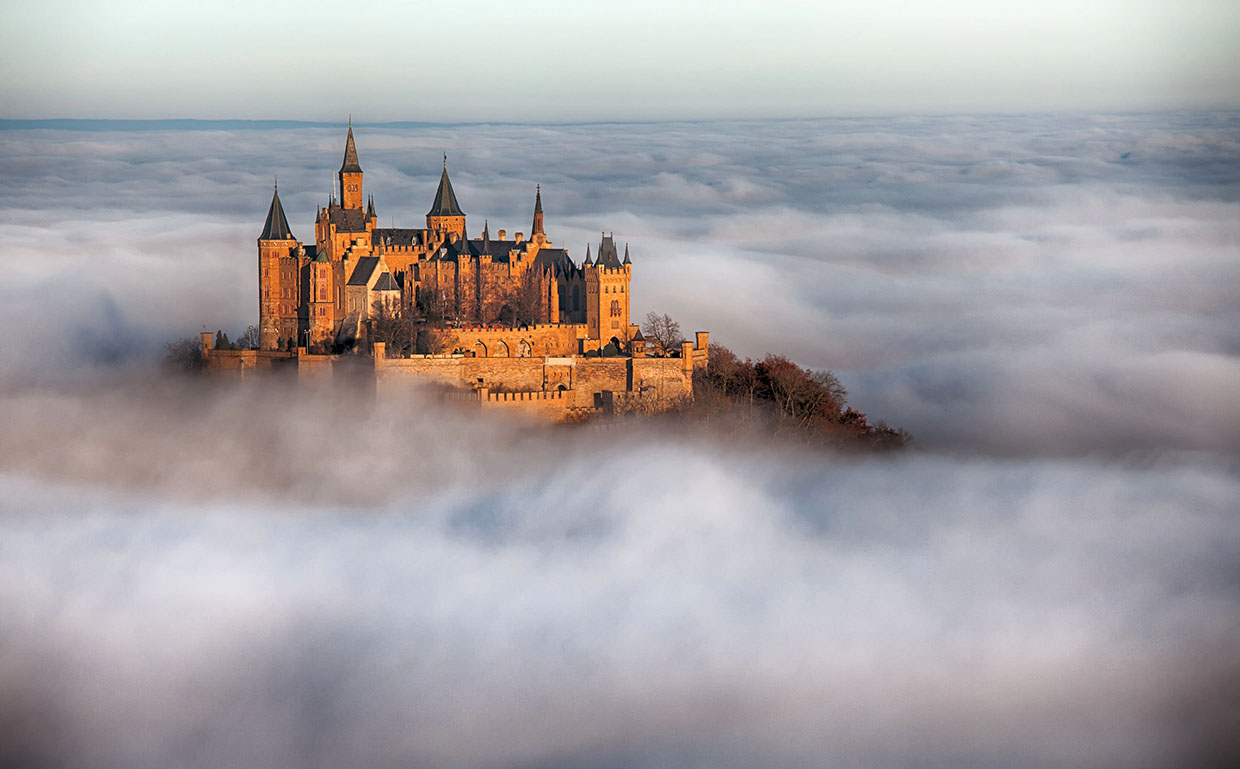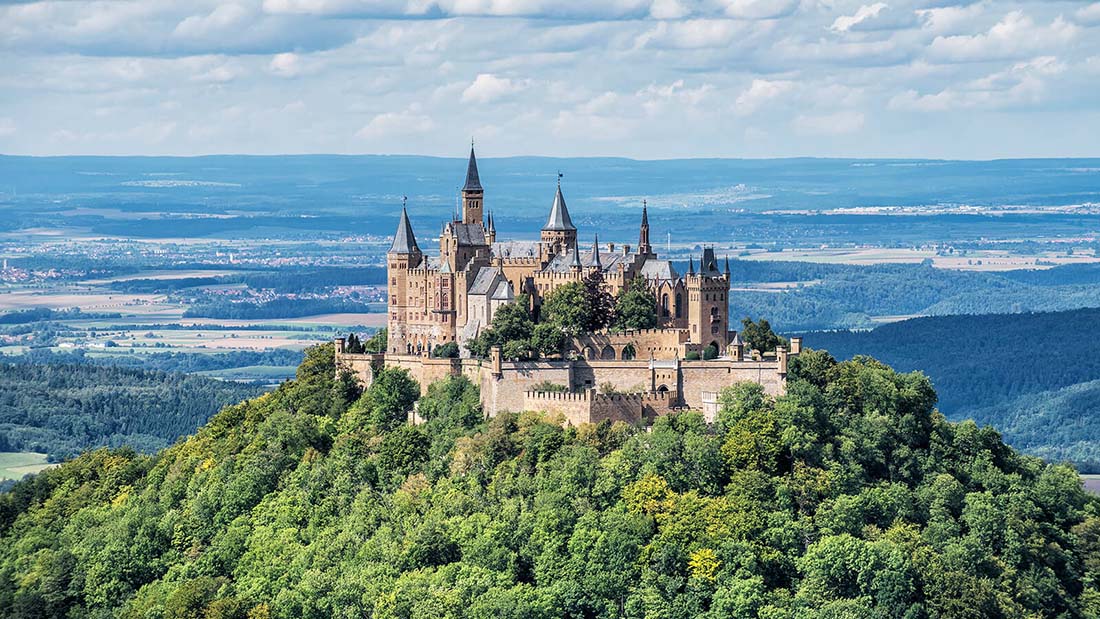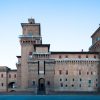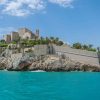Hohenzollern Castle
Hohenzollern Castle, a beacon of medieval grandeur and architectural splendor, stands proudly atop Mount Hohenzollern in Baden-Württemberg, Germany. Visitors celebrate this castle for its breathtaking views, rich history, and imposing presence that captures the imagination. As one of the most visited castles in Germany, it holds a special place in the annals of European heritage.
Can’t wait to visit the castle? Book your Hohenzollern Castle tour online.
Location of Hohenzollern Castle
Perched on the summit of Mount Hohenzollern, the castle is strategically located approximately 50 kilometers south of Stuttgart, the capital of Baden-Württemberg. The elevation provides stunning panoramic views of the Swabian Alps and the surrounding countryside. They chose this prime location not only for its defensive advantages but also to symbolize the power and prestige of the Hohenzollern family.

History of Hohenzollern Castle
The origins of Hohenzollern Castle date back to the early 11th century. Initially, the first fortress, built around 1020, served as the ancestral seat of the Hohenzollern family, a noble lineage that would later rise to significant prominence in European history. Over the years, numerous sieges struck this original structure, and consequently, it was completely destroyed in 1423.
In the mid-15th century, builders constructed a second, more formidable castle. This iteration of the castle reflected the Gothic architectural style and was designed to withstand the military tactics of the time. Despite its robust construction, neglect and the changing tides of warfare and political power took their toll. Over the centuries, the second castle fell into disrepair.
King Frederick William IV of Prussia commissioned the third and current incarnation of Hohenzollern Castle in the mid-19th century. Subsequently, the renowned architect Friedrich August Stüler designed it, and workers eventually completed the reconstruction in 1867. This version of the castle magnificently exemplifies Romanticism, seamlessly blending medieval and Gothic Revival elements to create a fairy-tale fortress. Furthermore, the new design aimed to reflect the historical significance and enduring legacy of the Hohenzollern dynasty.

Current status
Today, the castle is a major cultural landmark and a popular tourist destination. It is privately owned by the House of Hohenzollern, with parts of the castle open to the public. The interior of the castle houses an impressive collection of artifacts, including the Prussian King’s Crown and personal belongings of Frederick the Great. Various military artifacts also chronicle the illustrious history of the Hohenzollern family.
Visitors can explore the opulent rooms, admire the intricate woodwork, and experience the grandeur of the castle’s architecture. The library, the Count’s Hall, and the Chapel are particularly noteworthy, each offering a glimpse into the artistic and cultural heritage of the era.
The castle grounds also feature beautifully landscaped gardens and courtyards. These provide a serene setting for visitors to enjoy the picturesque surroundings. The castle hosts seasonal events, such as medieval markets and concerts. These events add to its allure and make it a dynamic cultural venue.
In addition to its historical and cultural significance, Hohenzollern Castle remains a symbol of resilience and continuity for the Hohenzollern family. It stands as a testament to the enduring legacy of one of Europe’s most influential dynasties.
In conclusion, Hohenzollern Castle is more than just a fortress. It is a living museum that encapsulates the rich history and heritage of the Hohenzollern family. Its strategic location, architectural magnificence, and historical artifacts make it a must-visit destination for anyone interested in European history and culture. Through careful preservation and continuous engagement with the public, the legacy of Hohenzollern Castle continues to inspire awe and admiration.
Admission
Community features
Castle features
Video
Location
Official website
Featured listings














